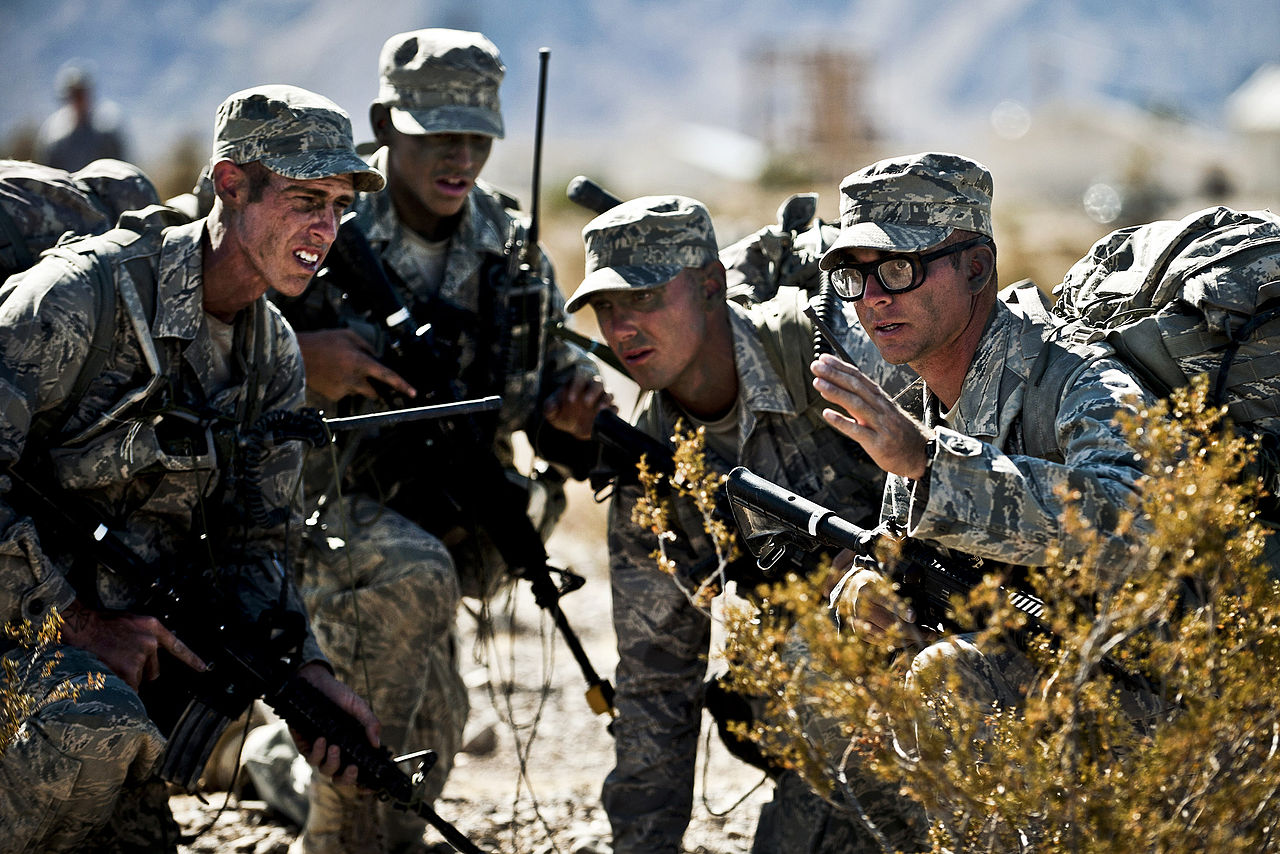The Camo Chronicles, Part 5: Flying Tiger-Stripes
A unique look is only one goal of uniform design
As we noted in an earlier post, designing a uniform is a balancing act that requires consideration of many factors. And the story of the development and deployment of the U.S. Air Force’s Airman Battle Uniform (ABU) serves as a reminder of what can happen when one aspect gains preeminence over other important goals.
The Air Force began its uniform research and development in October 2002. According to a 2012 GAO report on camouflage development, the objective was to “design a distinctive uniform that…provided a better fit, and was also easier and less costly to maintain.” This desire to create a uniform instantly recognizable as USAF appears to have been the prime consideration during the development process, with the GAO going on to reiterate “the Air Force wanted a utility uniform with a distinctively Air Force look.”
Like the Army and Marine Corps, the Air Force conducted camo-pattern tests. But instead of selecting a variety of candidates and then narrowing down the field, the Air Force sort of worked it in reverse. After conducting surveys for input from personnel on their design preferences, the USAF Chief of Staff ordered the Clothing Office to use a tiger-stripe camo pattern and specified that one fabric weight would be used for both trousers and blouses.

United States Air Force personnel wearing the tiger-striped Airman Battle Uniform during a field exercise.
Actual tests by the Air Warfare Center (AWC) of the tiger-stripe against the patterns on five other combat uniforms didn’t begin until three years into the ABU’s development. While the AWC’s report concluded that the tiger-stripe pattern performed well in most environments, four of its five competitors were environment-specific: it probably came as no surprise, for example, that the ABU outperformed the MARPAT Desert uniform in a tropical forest environment. The AWC report also suggested some design changes to improve combat effectiveness, such as finding solutions to heat buildup issues due to the fabric weight. The Clothing Office’s response—that “the original direction for the development of the ABU was for non-combat use rather than as a combat uniform or as a camouflage-effective garment”—reveals the importance placed on looks over functionality.
With its 2007 introduction, the ABU proved that the Air Force’s stated design goal had been achieved—but the snappy look came with a price. A sergeant interviewed by Stars and Stripes echoed the sentiments of many when he said, “[The ABU is] a great uniform to wear in a home station, air-conditioned office,” but not outdoors in the Middle East in combat. And the tiger-stripe pattern? As one major media outlet put it, the “throwback” pattern “serves little practical use in America's foreign wars”—a polite way of saying it wasn’t very effective camouflage.
To address these issues, the Air Force started work in 2009 on the Improved Airman Battle Uniform (IABU) to deliver a cooler, more lightweight utility uniform. The finished product, called the Rip-Stop Airman Battle Uniform (RABU), hit military clothing stores in 2012. And in 2010, the Air Force decided to let airmen deployed to Afghanistan wear the Army’s lighter-weight ACU featuring the MultiCam-based OCP camo pattern, a position unchanged with the Army’s switch to the new OCP pattern.
Requiring one combat uniform for use in Afghanistan and another for everywhere else is admittedly a short-term solution. But airmen wearing the ACU can take some consolation in knowing they won’t stand out as high-value targets for enemy forces looking to identify Air Force personnel responsible for calling in air strikes.
Next: Bluberry Jam
Previous: Universal Challenge